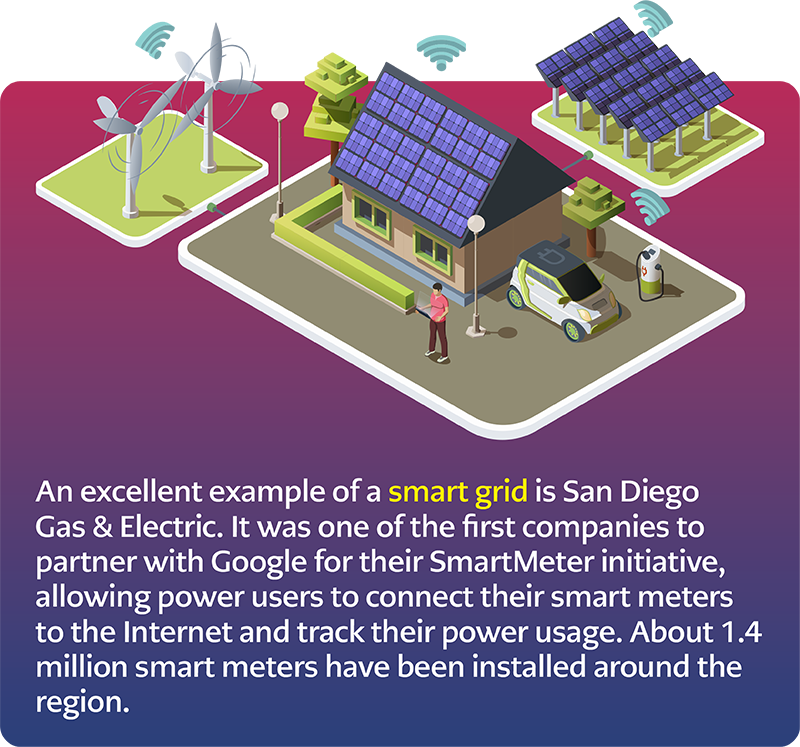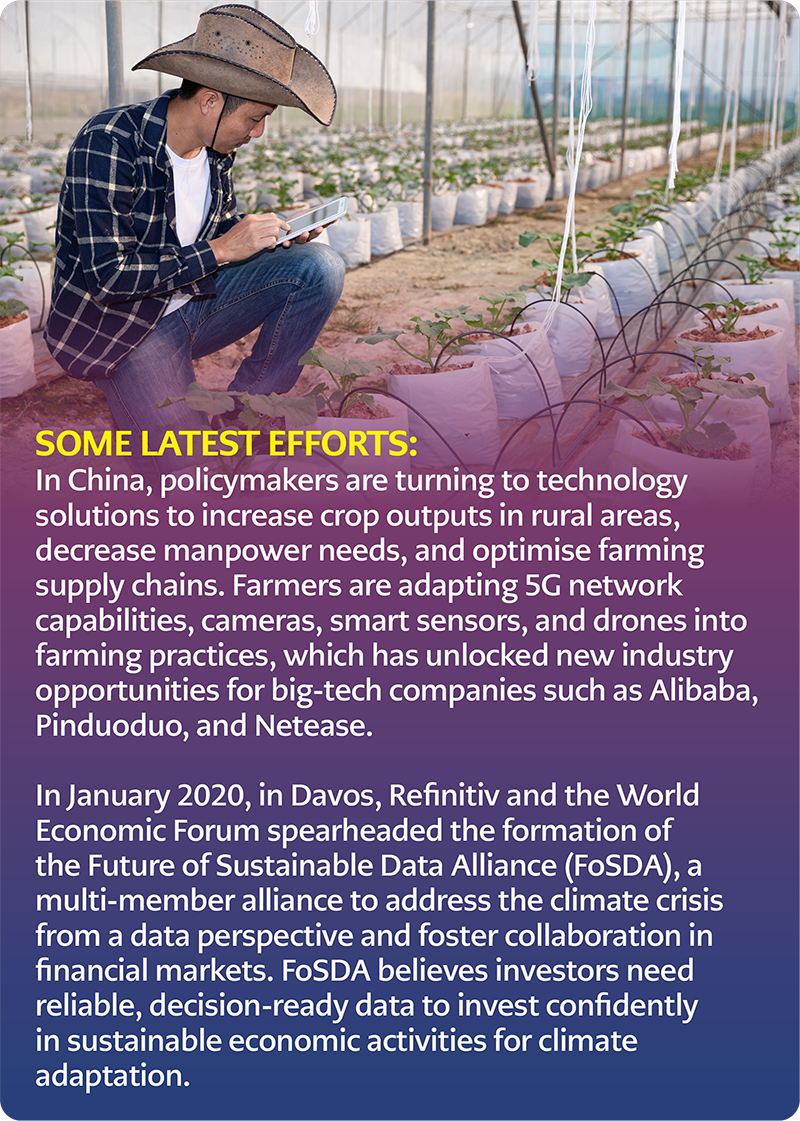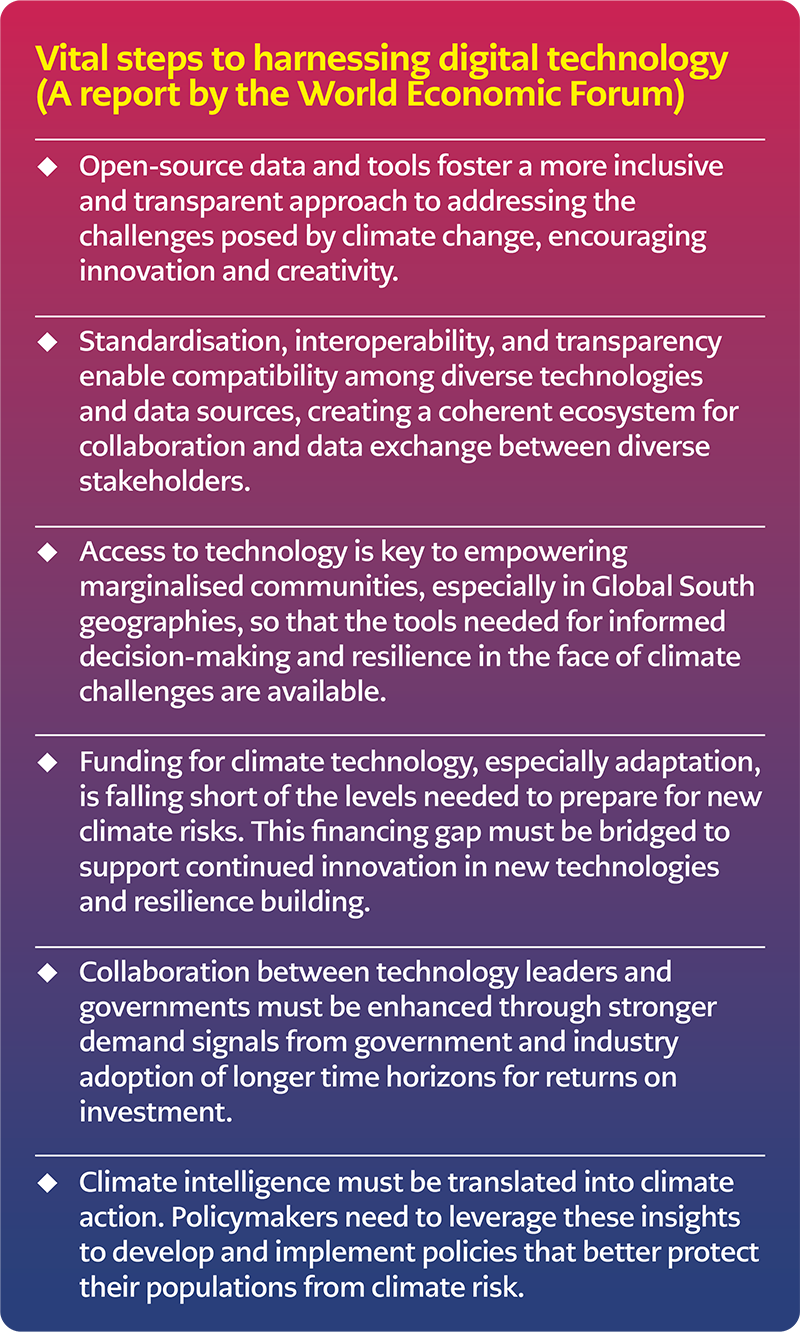Digital Technologies and Climate Change
As the effects of global warming are felt, adaptation and adjusting from within the industries are underway, including reducing the negative impacts by exploiting the heightening opportunities that grow with it.


The world is getting hotter, and the incidences of sea level rise, severe weather, storms and droughts have increased significantly and rapidly.
Climate change is responsible for this. The global cost of climate change damage is estimated to be between US$1.7 trillion and US$3.1 trillion per year by 2050, covering the cost of damage to infrastructure, property, agriculture, and human health. Greenhouse gases cause warming in the atmosphere, the principal factor behind climate change.
Although there are different types of greenhouse gases, carbon dioxide is the most recognised – it comes from burning fossil fuels. So, with the urgency to address climate change, can we deploy digital solutions as a panacea? Where do we begin?
Mitigating Climate Change
Mitigation — which involves reducing carbon emissions to slow or stop climate change — is achieved by using less energy or replacing fossil fuels (coal, gas, and oil) with zero-emission sources like renewable energy (solar, wind, geothermal, tidal).
Digital technology such as IoT and Smart Systems can improve energy efficiency in buildings – responsible for 37% of global carbon emissions - through innovative heating, air-conditioning, lighting, and automated systems, optimising energy distribution, automating building operations, and improving performance. Ultimately, a smart building is represented by an automated system linking all the various systems with a central processing unit, sensors and data monitoring to evaluate the building’s performance.
Another means of mitigation is through harnessing clean energy by applying digital technologies to control the electricity supplied and distributed to users through smart grids; smart grids can facilitate the distribution of renewable energy by providing real-time information on the system’s performance.

Data centres control the data to run numerous user operations, and their growth is anticipated to be exponential in the coming decade. Despite being invaluable to smart cities, data centres are notorious for having high cooling loads to maintain servers and other temperature-sensitive equipment. Hence, digital and AI-based solutions are crucial in controlling a data centre’s cooling facilities and optimising energy consumption.
Regarding natural resources, drones have been deployed to build 3D models of forest surfaces to capture information about tree health, height, biomass, and other factors. This, in turn, provides estimates of carbon storage quantities that can be used to determine long-term implications.

Adapting to a Warming World
Adaptation is concerned with adjusting to the effects of climate change to reduce the negative impacts and exploit the opportunities. Digital technologies can play a significant role in this. For example, early warning and disaster management systems can be established by circulating weather information gathered through the use of mobile phone data to access real-time and current information. With this information, cities can deliver early warnings to communities at risk of climate-impact events.

Drone deployment to build 3D models of forest surfaces to capture information about tree health, height, biomass, and other factors provides an estimation of carbon storage quantities that can be used to determine long-term implications.
Mobile apps can also enhance food security and support the agriculture sector by delivering weather and climate information, e.g., smart agricultural production and micro-level drought preparedness.


Data is Key
Data-driven and digital technologies can equip leaders and communities with unique capabilities particularly suited to support climate mitigation and adaptation efforts.
Access to the potential of digital technologies in addressing climate change and the data and information offered can help governments shape policy and regulations and companies build climate-friendly business models. For the individual on the street, knowledge is king, and as awareness grows, we will likely see a change coming not just from the top but from the bottom as well.

The potential for applying digital technologies to address climate change is enormous.
Dr Thomas Tang is the CEO of PJ-Sustainability Consulting. He is an entrepreneur, a passionate writer on sustainability and an advocate for a better world.







